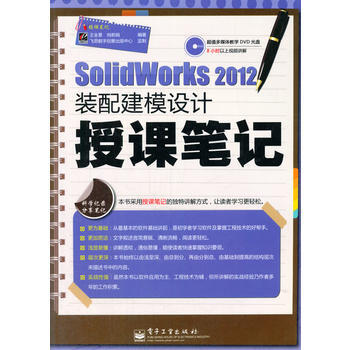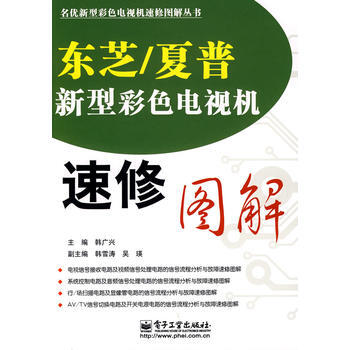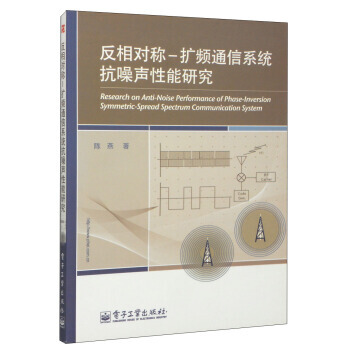

具体描述
基本信息
书名:SolidWorks 2012装配建模设计授课笔记(含DVD光盘1张)
定价:59.00元
作者:王全景,尚新娟著
出版社:电子工业出版社
出版日期:2012-08-01
ISBN:9787121171079
字数:
页码:
版次:1
装帧:平装
开本:16开
商品重量:0.740kg
编辑推荐
内容提要
SolidWorks为达索系统(Dassault Systemes S.A)下的子公司,专门负责研发与销售机械设计软件的视窗产品。达索公司负责系统性的软件供应,并为制造厂商提供具有Inter整合能力的支援服务。该集团提供涵盖整个产品生命周期的系统,包括设计、工程、制造和产品数据管理等各个领域中的*软件系统,的CATIAV5就出自该公司之手,目前达索的CAD产品市场占有率居世界前列。 王全景、尚新娟编写的《SolidWorks 2012装配建模设计授课笔记》以虚拟角色“H老师”珍藏的授课笔记为蓝本,将作者多年SolidWorks培训经验整理成书。 《SolidWorks 2012装配建模设计授课笔记》所要详解的核心设计内容包括产品建模设计基础、绘制草图曲线、草图编辑、实体造型、曲面造型、产品模型的检测与分析、装配设计功能、模型渲染功能、制图设计等行业应用设计知识。 《SolidWorks 2012装配建模设计授课笔记》定位初学者,旨在为三维造型工程师、模具设计师、机械制造者、家用电器设计者打下良好的二维制图基础,同时让读者学习到相关专业的基础知识。《SolidWorks 2012装配建模设计授课笔记》内容精辟,易学易懂,是不可多得的好书。
目录
讲 产品建模设计基础
第二讲 绘制草图曲线
第三讲 编辑草图
第四讲 实体造型设计
第五讲 曲面造型设计
第六讲 产品的检测与分析
第七讲 装配设计功能
第八讲 模型渲染
第九讲 工程制图
第十讲 产品建模综合实例
作者介绍
文摘
序言
用户评价
拿到这本书,首先映入眼帘的就是那个清晰的标题,SolidWorks 2012装配建模设计授课笔记,这明确了我这次的阅读目标——深入掌握SolidWorks在装配体方面的应用。翻开目录,我惊喜地发现,它不仅仅是简单的命令罗列,而是从基础的“创建装配体”讲起,逐步深入到“插入零部件”、“配合”、“爆炸视图”、“简化表示”等核心模块。我尤其期待的是关于“配合”的详细讲解。在实际工作中,装配体设计的难点往往就在于如何精确地约束零部件之间的关系,使其符合工程设计的逻辑。我希望能在这本书中找到关于各种配合类型(如重合、平行、垂直、同心、距离、角度等)的细致阐述,以及如何巧妙地组合使用这些配合来解决复杂的设计问题。比如,对于某些曲面之间的配合,或者带有浮动限制的配合,我希望作者能给出具体的图文并茂的演示,并解释其背后的原理。另外,关于“爆炸视图”的制作,我一直觉得这不仅是展示装配体拆解过程的工具,更是分析装配逻辑和方便维护的重要手段。我希望能在这本书中看到如何制作出清晰、直观的爆炸视图,甚至是如何利用爆炸视图来辅助零部件的测量和分析。再有就是“简化表示”。在处理大型装配体时,简化表示对于提高软件运行速度至关重要。我希望能了解如何在SolidWorks中高效地创建和应用简化表示,以及不同简化表示模式的区别和适用场景。这本书的DVD光盘,我猜测里面会包含一些实用的练习文件和演示视频,这对于我这种喜欢动手实践的学习者来说,无疑是一大福音。我希望光盘中的内容能够与书中的讲解相辅相成,让我能够边学边练,快速提升技能。
评分刚拿到这本书,它的书名“SolidWorks 2012装配建模设计授课笔记”就给我一种踏实可靠的感觉,好像是老师亲自整理的课堂笔记,充满了教学的温度和系统的逻辑。打开书本,我迫不及待地翻阅目录,发现其结构安排非常合理。从装配体基础知识的介绍,到零部件的插入与定位,再到核心的装配约束的应用,一步步深入。我特别想知道的是,这本书在讲解“配合”时,是否有针对一些常见的、容易出错的配合情况进行深入分析?比如,当一个零部件被多个配合约束时,如何判断哪个配合是主导的?或者,当配合发生冲突时,软件是如何提示的,又该如何去排查和解决?我希望能看到一些“疑难杂症”的分析,这对于提升我解决实际问题的能力非常有帮助。此外,书中对于“大装配体”的管理是否有提及?随着项目复杂度的增加,装配体中的零部件数量也会急剧增加,这不仅会影响软件的运行速度,也会给设计管理带来挑战。我希望能在这本书中找到一些关于如何优化大装配体性能的技巧,例如如何使用“轻量化组件”、“简化表示”等功能,或者一些关于零部件命名和层级管理的建议。毕竟,在实际工作中,高效地处理大型装配体是衡量一个工程师能力的重要标准。我对书中关于“运动仿真”的讲解也充满了期待。装配体的最终目的是实现运动,了解零部件之间的运动关系和可能的干涉是至关重要的。我希望能看到书中详细介绍如何设置驱动配合、分析运动轨迹,以及进行干涉检测和碰撞分析。如果能有具体的案例演示,例如模拟一个简单的机械臂运动,或者一个齿轮传动过程,那就更好了。
评分我拿到这本书的时候,第一感觉就是厚实,这让我对内容的充实度有了一定的信心。打开来一看,目录确实非常详尽,从最基础的装配体创建,到各种零部件的插入、定位,再到复杂的装配关系设定,几乎涵盖了SolidWorks装配建模的所有重要环节。我特别关注的是关于“自顶向下设计”和“自底向上设计”这两种设计策略的讲解。这两种方式在大型装配体设计中非常关键,不同的策略会带来不同的设计效率和管理方式。我希望能在这本书中看到清晰的对比和详细的适用场景分析,以及相应的操作演示。例如,如何在自顶向下设计中创建骨架模型,如何利用父子关系来管理零部件之间的关联性,这些都是我迫切想了解的内容。此外,在装配关系方面,我希望能看到关于“配合”的深度挖掘。不仅仅是介绍“重合”、“平行”、“垂直”等基础配合,我更希望了解如何处理复杂的配合,比如一些特殊的角度配合,或者多个零部件之间的联动配合。作者是否会给出一些案例,来展示如何通过组合使用多种配合来精确控制零部件的位置和姿态?我个人在实际操作中,经常会遇到一些棘手的配合问题,比如某个零部件死活定位不准确,或者配合设置后出现奇怪的干涉。如果这本书能提供一些解决这些常见问题的技巧和思路,那将是极大的帮助。另外,书中对于“大装配体”的管理方法有没有涉及?当装配体中的零部件数量达到几百甚至上千时,软件的性能可能会受到影响,设计效率也会降低。我希望作者能分享一些关于如何优化大装配体性能的方法,比如零部件的显示/隐藏、简化显示、轻量化组件等,这些都是提升工作效率的实用技巧。
评分The title "SolidWorks 2012 Assembly Modeling Design Lecture Notes" gives me a strong impression of its educational purpose. I'm looking for a resource that not only tells me how to do something in SolidWorks, but also why it's done that way, and what the implications of different choices might be. Examining the table of contents, I noticed a progression from basic assembly creation to more intricate aspects like mates and analysis. I'm especially interested in the section dedicated to "Mates." I often find myself spending a lot of time troubleshooting mate issues, trying to figure out why a component isn't positioning correctly or why I'm getting an error message. I'm hoping this book will provide a systematic approach to understanding and applying mates effectively, perhaps covering common pitfalls and strategies for resolving mate conflicts. I'd be thrilled if it offered insights into advanced mate types or combinations of mates that can achieve complex kinematic behaviors. Another area I'm eager to explore is the book's approach to managing large and complex assemblies. As my projects tend to grow in scale, I've encountered performance issues and difficulties in navigating through numerous components. I'm hoping for practical advice on optimizing assembly performance, such as utilizing features like "Simplify" or "Lightweight Components," and potentially strategies for organizing the assembly structure to improve clarity and efficiency. The inclusion of a DVD is a significant advantage. I envision it containing practice exercises, sample files, and perhaps video demonstrations that will allow me to actively engage with the material and solidify my understanding. Ideally, the DVD content would mirror the book's lessons, providing a hands-on learning experience that reinforces the concepts presented.
评分这本书的封面设计,那种经典的SolidWorks蓝色调,加上简洁的字体,一下子就吸引了我的目光。标题“SolidWorks 2012装配建模设计授课笔记”明确了它的定位——这是一本偏重教学和实践的教程。拿到手后,我迫不及待地翻开了目录,发现内容安排得相当系统,从最基本的装配体创建,到零部件的插入、移动、旋转,再到各种复杂的配合关系的建立,几乎涵盖了装配建模的各个方面。我最期待的是关于“配合”的详细讲解。在我看来,配合是装配建模的核心,也是最容易让人感到困惑的部分。我希望能在这本书中看到各种配合类型的深入解析,不仅仅是表面上的介绍,更希望有关于如何根据实际工程需求选择最合适的配合,以及如何处理一些棘手的配合问题,比如当一个零部件被过约束或欠约束时,软件会给出怎样的提示,以及如何进行排查和修正。我希望作者能通过一些实际案例,展示如何利用配合来精确控制零部件的位置和姿态,甚至是通过配合来实现某些特殊的运动学约束。另外,我对于书中关于“大装配体”的处理方法也很感兴趣。在实际项目中,我们常常会遇到包含成百上千个零部件的复杂装配体,这不仅会大大降低软件的运行效率,也会给设计和管理带来极大的挑战。我希望能在这本书中找到一些关于如何优化大装配体性能的实用技巧,例如如何有效地使用“轻量化组件”、“简化表示”等功能,以及一些关于零部件的命名规范和层级管理的建议。毕竟,高效地处理大型装配体是衡量一个SolidWorks工程师专业能力的重要指标。
评分Upon first glance, the title "SolidWorks 2012 Assembly Modeling Design Lecture Notes" suggests a text that is both comprehensive and instructionally sound. I'm particularly interested in how the book approaches the creation and manipulation of complex assembly structures. While I can handle the basics of inserting and mating components, I often find myself wanting more sophisticated techniques for managing intricate designs. I'm hoping the book delves into advanced strategies for organizing and structuring large assemblies, perhaps discussing the benefits of using sub-assemblies and how to effectively manage the relationships between them. Furthermore, the concept of "lecture notes" implies a focus on underlying principles rather than just a superficial overview of commands. I'm eager to see if the book provides in-depth explanations of the "why" behind certain assembly modeling decisions, helping me to develop a deeper understanding of best practices and efficient workflows. I'm also curious about the book's coverage of assembly features beyond basic mating. Does it discuss tools for managing motion, simulating kinematics, or performing interference detection in a detailed manner? Such information would be invaluable for ensuring the functionality and integrity of my designs. The inclusion of a DVD is a significant selling point for me, as I learn best through a combination of reading and practical application. I envision the DVD containing project files and possibly video tutorials that will allow me to follow along with the examples and experiment with the techniques presented in the book. This hands-on approach is crucial for solidifying my understanding and building confidence in my assembly modeling skills.
评分The title, "SolidWorks 2012 Assembly Modeling Design Lecture Notes," immediately conveyed to me that this would be a structured and instructional resource, rather than just a quick reference. I'm eager to see how the book breaks down the often-complex world of assembly modeling into manageable, teachable sections. My primary interest lies in the practical application of advanced assembly features. While I'm comfortable with basic mates, I often find myself struggling with more intricate scenarios, such as managing complex motion or dealing with very large assemblies. I'm hoping the book will offer detailed guidance on how to effectively utilize tools like configurations and simplified representations, and perhaps even touch upon best practices for managing large assemblies to maintain software performance and design clarity. The "lecture notes" aspect suggests a focus on understanding the reasoning behind design choices, which is crucial for developing true proficiency. I'm looking for explanations that go beyond simply stating how to perform a command, but also delve into the strategic considerations and potential consequences of different approaches. This deeper understanding is what separates a novice from a skilled designer. The inclusion of a DVD is a significant plus for me. I learn best when I can combine reading with hands-on practice, and I anticipate that the DVD will provide valuable resources such as sample files and potentially video demonstrations that will allow me to actively engage with the material and reinforce the concepts presented in the text. I hope the DVD content will be directly integrated with the book's lessons, providing a seamless and effective learning experience.
评分The title itself, "SolidWorks 2012 Assembly Modeling Design Lecture Notes," immediately signals a comprehensive and instructional approach, which is precisely what I look for in technical literature. Upon opening the book, I was greeted with a well-organized table of contents that promised a thorough exploration of assembly modeling. I'm particularly keen to understand the book's treatment of advanced assembly techniques. While I can manage basic component placement, I often struggle with more complex scenarios. Specifically, I'm interested in how the book addresses the creation and management of sub-assemblies within larger assemblies. How does one effectively structure a complex project using sub-assemblies to maintain clarity and ease of modification? I also hope for detailed guidance on utilizing configurations. Configurations are incredibly powerful for managing variations within an assembly, but I often find myself unsure of the most efficient way to create and apply them. I'd love to see practical examples demonstrating how to leverage configurations to represent different states or options of an assembly, and how to manage the associated mates and features. Furthermore, the term "lecture notes" suggests a focus on understanding the underlying principles, not just the mechanical execution of commands. I anticipate explanations that clarify the "why" behind certain design decisions and workflows, helping me develop a deeper intuition for effective assembly modeling. The DVD component is also a significant draw. I imagine it will contain sample files and possibly video demonstrations that will significantly enhance the learning experience, allowing me to follow along and practice the techniques presented in the book.
评分这本书的封面设计倒是挺吸引人的,那种经典的SolidWorks蓝色背景,加上2012的醒目标识,让我一眼就觉得它是专门为我这类想系统学习SolidWorks装配建模的读者准备的。当然,名字里“授课笔记”这几个字,也暗示了其内容的系统性和教学性,这正是我想从一本教程中获得的。我一直觉得,要真正掌握一款软件,光看视频教程是远远不够的,必须要有像笔记一样,条理清晰、重点突出的文字辅佐。尤其是装配建模,这部分涉及到的逻辑和步骤会更加复杂,需要有详细的解释来帮助理解。我特别关心的是,这本书在讲解装配约束的时候,是如何引入的。是直接给出各种约束类型,还是会先从一个简单的例子入手,讲解为什么需要约束,以及不同约束在不同场景下的应用,这样循序渐进的学习方式,才能让我真正理解其背后的原理,而不是死记硬背。另外,对于装配体中的运动仿真和干涉检查,我希望能有更深入的讲解。很多时候,我们创建的装配体只是静态模型,而装配的最终目的是为了模拟真实世界的运动和检测潜在的冲突。这本书能否教会我如何有效地进行运动仿真,并从中分析出关键的运动学参数,以及如何通过干涉检查来优化设计,这是我非常期待的部分。毕竟,在实际工程中,这些高级功能往往是决定设计成败的关键。还有,书中的案例是否足够典型和具有代表性?我希望能够看到一些常见机械零件的装配实例,比如齿轮箱、连杆机构等,这样我才能将学到的知识融会贯通,应用到自己的实际项目中。如果案例过于简单,或者不够贴近实际应用,那么这本书的实用性就会大打折扣。我希望这本书能提供一些“干货”,让我学完之后,真的能感受到自己在SolidWorks装配建模能力上的提升。
评分看到这本书的标题,我 immediately felt a sense of familiarity and anticipation. "SolidWorks 2012 Assembly Modeling Design Lecture Notes" suggests a structured, pedagogical approach, something I've been actively seeking. Flipping through the table of contents, I was pleased to see a logical progression of topics, starting with fundamental assembly creation and moving through component insertion, positioning, and the crucial aspect of mates. My primary interest lies in the nuanced application of mates. I'm hoping the book delves beyond a simple listing of mate types (coincident, parallel, concentric, etc.) to explore why and when to use specific mates, especially in complex scenarios. For instance, how does one effectively constrain parts with rotational freedom or limit the range of motion? I anticipate detailed explanations and visual examples demonstrating how to build robust and reliable assembly constraints, avoiding common pitfalls like over-constraint or under-constraint issues. Furthermore, the inclusion of a DVD is a significant plus. I envision it containing project files and perhaps video tutorials that complement the text, allowing for hands-on practice. This is invaluable for solidifying theoretical knowledge. I'm keen to see if the DVD content includes exercises that simulate real-world design challenges, allowing me to apply the learned concepts in a practical context. The ability to replicate the examples and then experiment with variations is key to developing true proficiency. Finally, I'm curious about any discussions on best practices for organizing and managing large assemblies. As projects grow in complexity, so does the number of components, and effective strategies for handling such assemblies are essential for maintaining efficiency and preventing performance issues.
相关图书
本站所有内容均为互联网搜索引擎提供的公开搜索信息,本站不存储任何数据与内容,任何内容与数据均与本站无关,如有需要请联系相关搜索引擎包括但不限于百度,google,bing,sogou 等,本站所有链接都为正版商品购买链接。
© 2025 windowsfront.com All Rights Reserved. 静流书站 版权所有




















